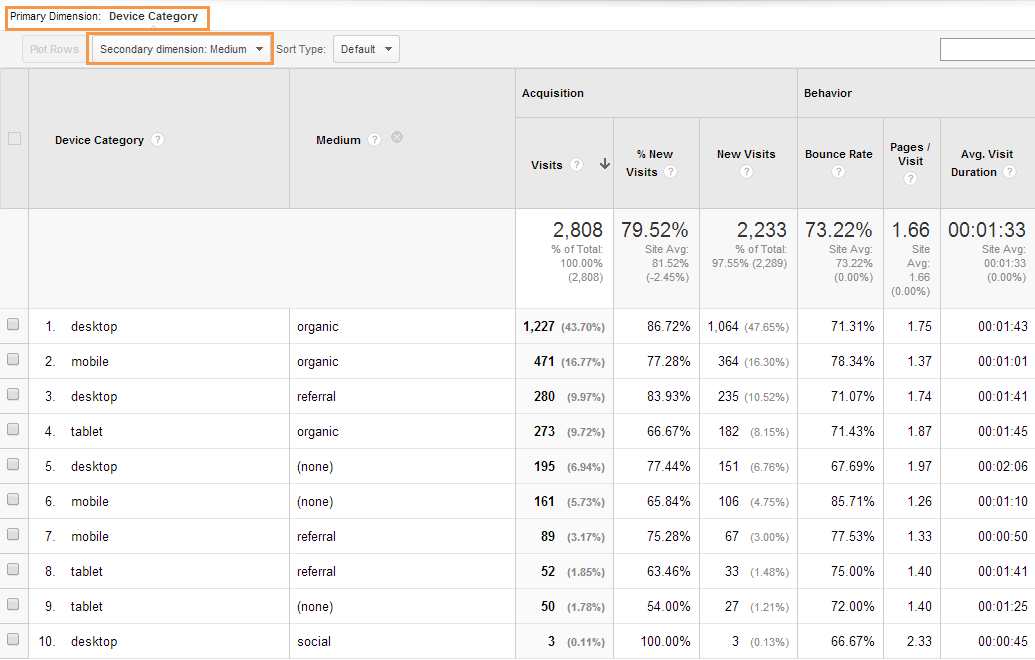Exploring Google Analytics Secondary Dimension: Methods and Advantages
Exploring Google Analytics Secondary Dimension: Methods and Advantages
Blog Article
Opening the Power of Secondary Measurement Analytics for Enhanced Information Insights and Decision-Making
In the world of information analytics, primary dimensions typically take the limelight, but the true depth of insights lies within the world of secondary measurements. By harnessing the power of additional measurement analytics, organizations can unveil surprise fads, uncover connections, and essence a lot more significant conclusions from their data.
Value of Additional Measurements
Exploring the relevance of secondary dimensions in analytics introduces the surprise layers of data understandings crucial for notified decision-making in numerous domains. Secondary measurements supply a much deeper understanding of primary information by offering extra context and perspectives. By integrating additional measurements into analytics, organizations can extract more nuanced and detailed insights from their datasets.
One secret value of secondary dimensions is their ability to sector and categorize main data, enabling a more detailed evaluation of details parts within a dataset. This segmentation enables services to identify patterns, trends, and outliers that may not appear when looking at the information overall. Moreover, second measurements aid in discovering correlations and dependencies in between various variables, bring about more exact forecasting and predictive modeling.
In addition, additional measurements play an essential role in improving data visualization and coverage. By adding second measurements to visualizations, such as charts or graphs, analysts can create much more informative and insightful representations of data, assisting in better interaction of searchings for to stakeholders. On the whole, the integration of secondary dimensions in analytics contributes in opening the complete potential of data and driving evidence-based decision-making.
Trick Advantages of Using Additional Measurements
Making use of secondary measurements in analytics offers companies a calculated advantage by augmenting the deepness and granularity of information understandings. One vital advantage of incorporating secondary measurements is the capacity to section and filter data, permitting a much more thorough evaluation of certain aspects within a dataset. This segmentation enables companies to obtain a more nuanced understanding of their audience, performance metrics, and various other critical information points. By studying information utilizing additional dimensions such as time, place, device type, or individual demographics, organizations can uncover patterns, fads, and relationships that may or else stay surprise.
Moreover, the application of additional dimensions boosts the context in which primary information is translated. By leveraging second dimensions in analytics, organizations can harness the full capacity of their data to drive far better decision-making and accomplish their organization purposes.
Advanced Data Evaluation Methods
A deep dive into advanced information analysis strategies discloses innovative techniques for extracting useful understandings from intricate datasets. One such technique is device understanding, where algorithms are employed to determine patterns within data, forecast end results, and make data-driven decisions. This technique enables the automation of logical version structure, allowing the handling of huge quantities of data at a faster speed than traditional find more info techniques.
One more sophisticated technique is predictive analytics, which makes use of statistical algorithms and artificial intelligence strategies to anticipate future end results based upon historical data. By examining patterns and fads, organizations can anticipate customer habits, market fads, and potential threats, encouraging them to make aggressive decisions.
Additionally, text mining and belief evaluation are useful methods for extracting insights from unstructured information resources such as social media remarks, customer testimonials, and study responses. By assessing text information, organizations can understand consumer opinions, identify arising patterns, and improve their services or items based on responses.
Enhancing Decision-Making Via Second Measurements
Enhancing decision-making via second dimensions allows services to make more informed and targeted critical choices. By segmenting customer information based on second dimensions like acquiring history or engagement degrees, firms can tailor their marketing approaches to specific target market sections, leading to boosted conversion rates and consumer fulfillment. Secondary measurements can help identify correlations and connections in between various variables, making it possible for organizations to make data-driven choices that drive growth and earnings.
Carrying Out Secondary Measurement Analytics
When incorporating additional measurements in analytics, organizations can open much deeper insights that drive tactical decision-making and boost overall efficiency. This entails recognizing the particular questions the company seeks to answer and the information points called for to resolve them.

Moreover, organizations ought to leverage progressed analytics devices and innovations to improve the process of including second measurements. These tools can automate information handling, evaluation, and visualization, allowing companies to concentrate on translating understandings as opposed to hands-on information adjustment.
Verdict
To conclude, secondary measurement analytics play an important duty in improving data insights and decision-making procedures. By using sophisticated information evaluation strategies and implementing second measurements effectively, companies can unlock the special info power of their information to drive calculated service decisions. The vital benefits of utilizing secondary measurements can not be overstated, as they give a much deeper understanding of information patterns and relationships. It is essential for companies to utilize secondary measurement analytics to remain affordable in today's data-driven landscape.
In the realm of information analytics, key dimensions commonly take the spotlight, but the true depth of insights lies within the realm of second measurements.Utilizing secondary dimensions in analytics offers companies a calculated benefit by increasing the depth and granularity of data understandings. By leveraging additional dimensions in analytics, organizations can harness the full capacity of their information to drive far better decision-making and accomplish their organization purposes.
Carrying out information recognition procedures and regular audits can assist preserve data quality and integrity.
By utilizing advanced information analysis methods and implementing secondary dimensions properly, organizations can unlock the power of their information to drive critical organization choices.
Report this page